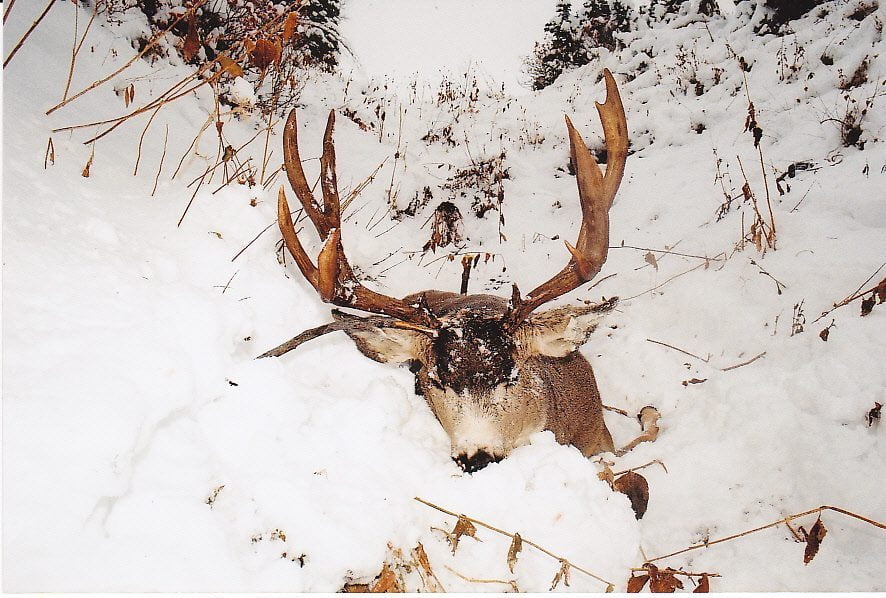
Last year, I started my series, Killing Big Mule Deer, to share the techniques I use. Any buck over four years old is going to catch the attention of 90% of DIY hunters and few will pass one up. You have to hunt these bucks differently than their younger cohorts. If you missed those posts, you can catch up by starting here: KBMD, then reading your way back up the blog. This post will touch on a very important skill: Learning to Find Big Buck Country
By honing this skill, you can narrow down where to spend your time and energy. Big mature mule deer don’t just wander aimlessly. I estimate that in many units, during the season you’re hunting, only about 20% of the unit will hold the bigger older bucks. This changes according to season, rut, and weather, but even when the bucks are on the move, they seek out certain places. I believe they choose the country they spend the most time in according to two factors.
Security
If a buck has made it to four years old, he’s encountered many dangers that have taught him how to survive. From the first day of life, predators have been a constant threat. Now consider a buck living in a hunted population. If he makes it through his first several seasons, he learns to use the country to avoid danger. A big mule deer will always be in the most secure places he can find.
Quality Feed
I’ve read several studies that show bucks can detect the quality of their feed and my experience agrees—big bucks seek out ample feed. Even in extremely rough country where the majority of the ground is covered with rock, the bucks will be where the most feed is. In CRP country, the big bucks don’t feed in it much (unless it’s new) but rather seek out growth that is not over mature. Whenever I scout desert country for bucks, I look for agriculture as that is where the best feed is. In very dry areas of the West, I lump water into the feed factor. Bucks are going to be living within about a mile of water.
Following are some pictures of mule deer country. I’ll give my best advice on where to look for bucks:
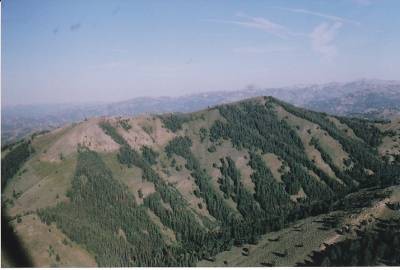
I took this picture from a plane of a mountain in a good Idaho unit. The mountainside has a good mixture of timber for cover and openings with feed, and is plenty steep; however most of it is “smooth” meaning not a lot of variation in topography. Bucks certainly live there, but I like a mountain that is a little rougher. If I was going to scout it, I’d watch for the bucks in the lower left (near the shadow of the of the plane’s strut) on and above that bench. There is enough variation in topography, steep slopes, and timber to make an older buck feel safe there.
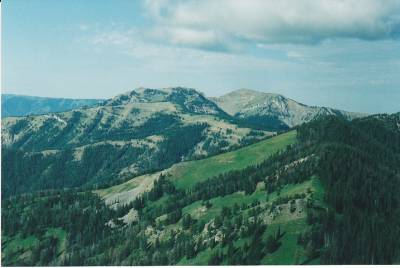
This picture illustrates the difference of quality deer feed vs. country too rocky to attract many bucks. In the foreground, notice how “green” the feed is. That means it’s nutritious and knee deep (before the frost.) There is enough timber to provide escapement making older bucks feel safer there. Inexperienced bucks will frequent the most open country but not the big boys. In the background, you’ll see two ridges and two mountains. Notice they have a more gray appearance meaning much more rock than vegetation. Consequently there will be fewer bucks in that country. It’s more conducive to mountain goats.
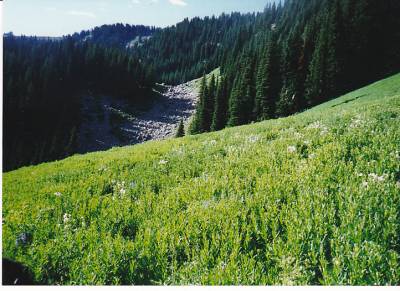
This picture illustrates the knee-deep feed big bucks are attracted to in summer and early fall. While you won’t see many in the wide open where I took the picture, closer to the timber and above that rockslide is very “bucky”. All the timber in the background is interspersed with broken meadows with feed. About the only way to kill a big buck here is by still-hunting with a rifle as you can’t really get a good vantage point and watch the whole mountain, another reason big bucks will feel secure there.
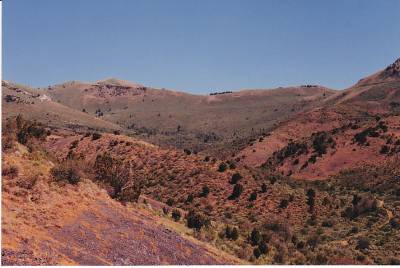
Moving down from the high country, here is a picture of some good buck country typical of Northern Nevada. It is a mix of juniper, sage, bitterbrush, and aspen. The country is too open to sustain much pressure and still have older bucks. However, if it’s in a managed unit, a really big buck could show up. It doesn’t have to be a trophy unit with low tag numbers, but also can’t have a rifleman on every ridge every day. The country in the background is too open while the country in the forground is too close to that road in lower right. However, the bench on the right of the picture and the cover in the middle of the picture are prime places for a big buck to hang out.
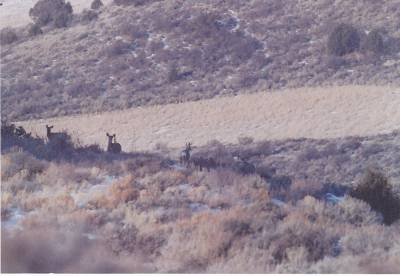
This picture illustrates what I mean about CRP country. That is an over-mature stand of CRP in the middle but notice where the deer are. I certainly don’t ignore CRP, but I look closely at all the cover around it. There are four deer in the picture: two does, a small buck, and a good buck, (which of course is the hardest to see) so look close. He’s just below the small buck looking uphill at the does.
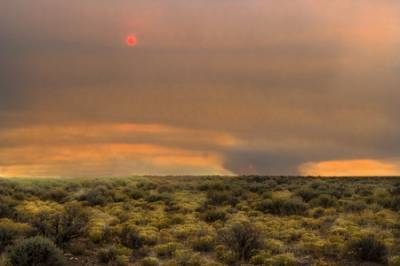
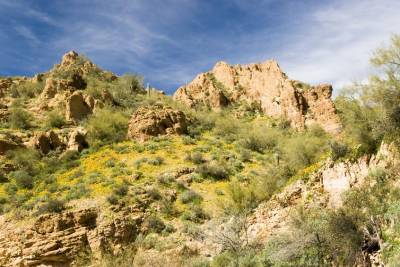
I haven’t killed any big desert bucks yet, but I’ve scouted up a few. I find that the bucks are still attracted to the rougher terrain with the best feed. The picture on the left has plenty of feed but it’s too short and the terrain is too flat to make a big buck feel secure. I look for desert bucks in rougher country like that on the right.
I could do ten blog posts on this subject, but suffice it to say that the most successful mule deer hunters I know learn how to read mule deer country to find the biggest bucks. With practice, you will too.
Make sure you subscribe to the Rok Blog so you don’t miss upcoming posts on Killing Big Mule Deer, gear, good books, mule deer application strategy and more. Just click “Subscribe to blog” upper right under Fitness/Other.














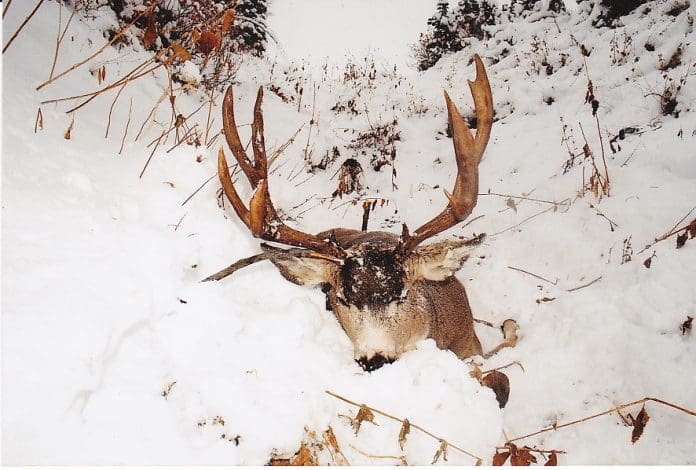






Great examples!
Hi Shane, I know you’ve spent a lot of time hunting desert mule deer. What kind of terrain/habitat do you see the best bucks in?
Thanks Robby- that post just got me fired up for the 2015 season!
One other comment that I’d like to get your input on. I have one spot in Idaho where the mountain has two different types of country depending upon the direction the slope is facing. The south/west facing slope is drier with rocks, fire brush, sage and few pines through it…similar to your top pic but even less timber. The opposite north/east side has a lot more timber and better feed late and looks a lot like your 3rd pic down. During scouting I try and focus on the south slope in June/July while there is good feed and when the bucks are a little less edgy. I’ve found a few big bucks early but they disappear come Aug and during the hunting season. I think they go to the opposite side for cover even though there is more people pressure on the other side. Or maybe they stay on the south side and are just more elusive- much more remote with less pressue on this side. Not sure though….do you have any area’s that are like this?
Corey, my opinion is that the big bucks leave the more open country as you get into October and even more so if hunting season is open. Even though your south/west facing slope might receive less pressure, it hardly takes any pressure to move a big buck into the cover. If the big bucks were on that south side, you’d see them or their tracks with a few days of hunting. They can only become so “elusive” in open country. They’re not magic.
The timber on the north/east side is a good place to assume they’ve went even if it gets more pressure as those big bucks have so many advantages in timbered country. Now it can’t have crazy amounts of pressure or they won’t go there either- they just leave but likely don’t go far.
This is what I’d do: If I’d scouted a big buck on a mountain like you’ve described, I’d hunt the opener checking the most open country first then transition to hunting the cover. I’d hunt till I was tired then go home, repack my gear and be ready for snow. As soon as any snow came, I’d spend a day or two checking all the cover for big tracks. Bucks can’t hover and tracks don’t lie. If I never got any snow, I’d go back and hunt all the cover and the edges of the cover. I’ve seen huge bucks (killed ’em too) live on a mountain smaller than the one in the top pic all fall even with a fair amount of pressure. They don’t usually go far.
Hope that helps.
Great write up to by thanks for sharing your knowledge.
Comments are closed.